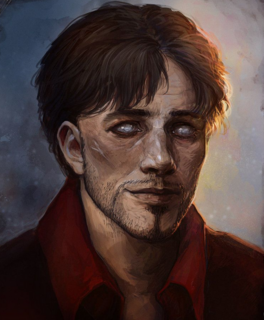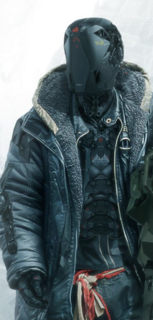I have finished a few more of Kanth-Aremek's species. Once Catharyn is back online later, she can finalize and add them to the OP. I'll go ahead and put them here now though, so people can see them.
S'tor
The S’tor are a bipedal, reptilian species. To a Human, they would appear to have a rather dragon-like appearance, though without the capability of flight. They have tough, thick scales which serve as a kind of natural armor, and that can have a large variety of colors and patterns. They tend to be large, with an average height well over six feet. As well, they are physically the second most powerful of the continent’s species, behind the Lorok.
Given their natural physical prowess, the S’tor have produced some of the most war-like cultures in the continent’s history. Granted, for most of their history, their warlords have been just as likely to fight one another as anyone else. However, the success of one particular warlord changed that dynamic. Cedec Kolodon, the conqueror, brought all of the S’tor under his banner, and of course, proceeded to set his sights outside their borders. The S’tor’s campaign of conquest started with smaller, neighboring states, but quickly picked up steam as they gained more land, resources, and recruits. Through decades of war, they spread farther and farther south across the continent. Larger nations usually fought or allied together to resist, while some smaller nations simply capitulated. Although they were slowed at times, especially when they reached the lands of the Glen and Iriad, there was ultimately no one who could stop them from conquering the continent.
The Kolodon Empire, as it was known, ushered in an era of strict, orderly rule across the continent. The S’tor under the Kolodon had been a highly organized, stratified society. The role of every citizen was both well-defined, and non-negotiable. Especially among cultures that loathe such restrictions, unrest and sedition was frequent, and harshly dealt with. For as much as it is remembered as being hated, however, Imperial rule was not strictly detrimental to their subjects. Indeed, under the Kolodon clan’s watchful eye, the continent experienced widespread growth and economic expansion. The Empire invested in massive building projects, such as roads connecting every major city, and dedicated military support to patrolling them to keep them safe for trade and travel. They established a unified code of laws and mandated that it be available for all citizens to be able to study and understand. In places where law had once been informal, unevenly, or even capriciously enforced, it made life more predictable and secure for the average citizen. The Empire mandated their language as the official tongue for trade and matters of state, and required it to be taught in all corners of the empire. Even today, S’toric is the most commonly known language across the continent, and is generally considered the
lingua franca for dealings across cultures.
The rule of the Kolodon Empire lasted centuries and served to strengthen connections between cultures that had previously never interacted. However, despite the increases in wealth, fractures still began to form over time. The cultures they had conquered had not been destroyed, and there were some who still longed for the freedom and self-determination they had once enjoyed. Resistance, rebellions, and small uprisings popped up periodically. Even when they were put down, they still steadily eroded the Empire’s hold over its territory. Coupled with a string of ineffective Emperors, corruption in their government, and the growing influence of some regional rulers, the famed order of the Empire became much less firm. Eventually, large provinces became bold enough to split into open rebellion, right around the time that magic was discovered by the people of Kanth-Aremek. There are many who think of magic as what broke apart the Kolodon Empire, but most historians agree that it had been falling apart for many years leading up to it. The chaos wrought by magic merely hastened its fall.
The modern S’tor have returned to being split among a collection of nations in the northern half of the continent, struggling with one another just as much as any outsiders. The Kolodon “Empire” still exists in their original homeland as just one of those nations, while other clans fight for dominance to prove themselves as the ones who will restore the S’tor to their former glory. Although, just as the S’tor spread their culture across the land, so too did other cultures leave their mark upon them. Not all of the new S’tor kingdoms have maintained the former tenets of Imperial law. Some have loosened their restrictions, and while they still defend themselves, no longer seek to project their military might outwards. Rather, they seek to adapt to this new world as it evolves.
Glen
Originally the “glenfolk”, named for the lush natural valleys and forests of their homeland, they have since come to dominate many of the vast plains across the continent. They are a quadrupedal species, centaur-like, with an upper body resembling an elk (inspired by
this sculpture).
For much of their early history, the Glen were nomads, though they did not remain resistant to settling down for long as other nations began to emerge. As with many other species on the continent, their history is a long series of small nations rising and falling as if with the tides, slowly shaping cities and building their culture. When the S’tor united and the Kolodon Empire formed, their city-states, like many others, banded together to resist. The S’tor’s war with the Glen lasted longer than most, but like all others, they fell to the singular rule of the Empire.
Though remembered as a dark period in their history for the strict and sometimes tyrannical leadership of their overlords, the Glen did benefit to an extent from their time as Imperial subjects. The organization and requirements of the hierarchy had ended up expanding their cities and strengthening their connections to other subject nations. When the Empire finally fractured, the land traditionally held by the Glen was split into two nations, Acanata and Mythadia, still primarily ruled by Glen, though now with significant populations of other species.
In modern times, Acanata and Mythadia are allied nations, and both together form the strongest alliance on the continent. Influenced by their central position in the continent, they had become trading hubs in the Empire, which has continued to this day. Acanata covers the area of the Glen’s original homeland and is ruled by a monarchy, while Mythadia is ruled by a council of noble families, including both Glen and other species. The roads that cross the plains are well-patrolled, and are among the shrinking few that are still considered to be mostly “safe” as the world grows more chaotic and dangerous. As other nations are rising to power and influence in the wake of magic’s discovery, their alliance is still holding strong to keep them as Kanth-Aremek’s leading power, for now.
The culture of the modern Glen is not particularly rigid, considering the multicultural influence upon Acanata and Mythadia during the time of the Empire. They are organized and civilized, but do not have strict social hierarchies. Glen tend to be particularly agitated by restrictions, and their love of freedom and adventure tends to push them to want to travel and explore.





